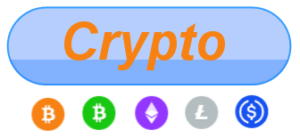How a Simulation of a Person's Mind Can Still Think, Feel, and be Conscious
An Opinion Response to, "If Simulated Fire Can't Burn Wood, How Can a Simulation Really Think, Feel or be Conscious?" by Michael Ulrich
When discussing simulation of cognitive function, in the context of Whole Brain Emulation, there is an argument against the simulation being capable of having real cognitive traits. This argument compares a simulation of fire to a simulation of cognitive function. If the simulated fire can’t do things that real fire can, like burn wood, then how could a simulation of cognitive function be capable of things that real cognitive function can do like think, feel, or be conscious?
It is obvious that a simulation is not the real thing. If you want to have a real fire, a simulation will not satisfy that. But if you want to burn something like real fire can, a simulated fire could be made to be able to do that. Simulation does not mean "effects in computer RAM only." This can be reflected with the simulated cognition situation. If what we want is real consciousness, real thinking, we can build a simulated cognition that can do that.
Going back to the simulated fire, there are things about fire that we know in regards to how it burns something. Take another substance, like acid, that can also burn something, and use it to build the simulation. If you want to add heat to the fire simulation, also use infrared illumination.
For simulated cognition, similar to how we know how fire burns things we need to know how cognition produces consciousness. Assuming consciousness (physically) is an electrical spike arrangement produced from the sequence of firing neurons in the brain, we can build the simulation of cognition with something else that can produce the same electrical spike arrangement such as computer transistors. Furthermore, each cognitive product, like thinking, memory, and feeling, can be simulated using the same tools.
These cognitive products of the simulated cognition can, therefore, have real world effects using real world sensory input. For instance, they can be used to recognize cars or faces and can grant or not grant access based on that, just like a person recognizing faces. Not surprisingly, there is little debate about whether simulated perception/vision can achieve real-world recognition. The distinction between arbitrary artificial vision and simulated vision may just be that the simulated version is an artificial vision that tries to closely approximate the way in which human vision accomplishes the task.
The misconception of comparing simulated fire to simulated consciousness, as a means to dis-affirm that simulated cognition can produce real cognitive products, comes from the misconception that making a computer simulation of cognition has the same purpose of creating a computer simulation of fire. The computer simulation of fire is meant to have only the real recognizable imagery that real fire produces. It has only this one real product that real fire produces. However, a computer simulation of cognition has everything it presumably needs to produce all real traits that real cognition can produce. This is because all real cognitive function products can be produced also by computers.
Therefore, simulated cognition can produce real cognition products because the simulation has the same means to do so. Furthermore, comparing simulated cognition to simulated fire must be done by using the correct interpretation of simulation which is that the real causal effects from one object are duplicated in another (different) object.
[Human cognition understanding is increasing. Much of the knowledge still has yet to be confirmed.]


